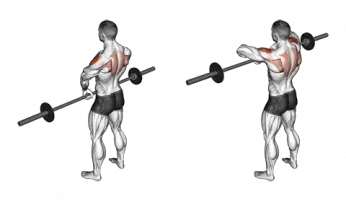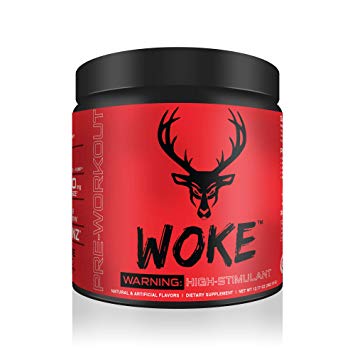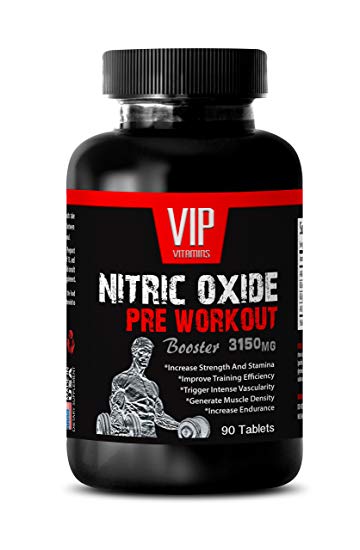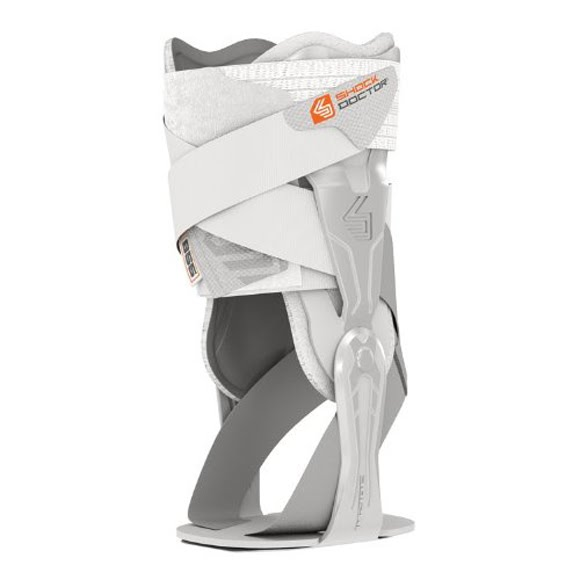Push/Pull Workout Routine to Build Muscles
The Push/Pull workout is a popular workout style that categorizes exercises as either requiring pushing or pulling movements. It then groups those exercises together into pushing and pulling routines. In this article, we uncover the most popular Push/Pull workout routines being used to build muscle and strip off body fat.
Push/Pull workout is one in which the positive, or concentric, part of the movement involves pushing or pressing a resistance away from the body. It may also involve pushing the body away from the floor. A pulling exercise is one in which the concentric part of the movement involves pulling the weight towards the body.
Splitting your workouts into Push/Pull workout routines, allows you to work for muscle groups together to perform the exercises. As an example, the chest, shoulders, and triceps all involve pushing exercises. With Push/Pull routines, you typically perform each workout twice per week. The body is divided into two workouts, meaning that you perform four workouts per week.
The Push/Pull Workout Power Split
Monday / Thursday (Push Workout)
This workout targets the thighs, chest, triceps, and calves

| Exercise | Sets & Reps |
|---|---|
| Squat | 3 x 8-12 |
| Leg Press | 3 x 12 |
| Leg Extension | 3 x 12 |
| Bench Press | 3 x 6-10 |
| Incline D/B Press | 3 x 8 |
| Dumbbell Shoulder Press | 3 x 8 |
| Close Grip Bench Press | 3 x 8 |
| Standing Calf Raise | 3 x 15 |
- Note: On your Thursday workout, start with the bench press and work your through so that your last exercise is the Leg Extension.
Tuesday / Friday (Pull Workout)
This Push/Pull workout targets the back, hamstrings, biceps, and abs

| Exercise | Sets & Reps |
|---|---|
| Deadlift | 3 x 8-12 |
| Lying Leg Curl | 3 x 12 |
| Barbell Row | 3 x 8-10 |
| Lat Pulldown | 3 x 8-12 |
| Barbell Curl | 3 x 8-12 |
| Weighted Crunch | 3 x 15 |
Push/Pull Workout Angle Training
Nearly every muscle group will have at least one exercise that won’t fit nicely into the category of either a push/pull movement. As an example, the leg extension, leg curl, side lateral raise and chest fly are technically neither pushing nor pulling exercises. They can be classified as angular exercises, due to the fact that they don’t follow a straight path either towards or away from the body. Rather, they move through an arc of movement.
Angular movements tend to be isolation exercises, whereas Push/Pull workout movement can be categorized as a compound, or multi-joint, exercises. The Push-Pull-Angle split is better suited toward bodybuilding training than the Push/Pull workout power split, mentioned as a part of the best push/pull workout, which is more geared toward powerlifters or those who are in a power/strength phase of their training regimen.

In the Push-Pull-Angle split, you start with a push day, in which you train your chest, legs, shoulders, triceps, and calves. All of these exercises are multi-joint exercises. On your pull day, you work your back, traps, and biceps. Again, the push and pull routines are all multi-joint exercises. Your third and fourth workouts of the week all involve angle exercises that allow you to hit your muscles with isolation exercises.
Your first angle training day will target the chest, legs, shoulders, and triceps. On your second isolation day, you work the back, biceps, forearms, and abs. You, thus, end up hitting each muscle group twice per week, one of them being a multi-joint workout and the other an isolation workout.
With this Push/Pull workout routine, you are able to concentrate on heavy, mass building training on your push and pull days and lighter, higher rep training on your angle training days. This provides you with a holistic approach to your training. You are able to hit the muscle with a fully faceted approach that allows for maximum hypertrophy.
Monday (Push Workout)
This workout targets the thighs, chest, triceps, and calves

| Exercise | Sets & Reps |
|---|---|
| Barbell Bench Press | 3 x 6-10 |
| Dumbbell Incline Press | 3 x 6-8 |
| Decline Smith Machine Press | 3 x 6-10 |
| Barbell Squat | 3 x 6-10 |
| Smith Machine Front Squat | 3 x 6-8 |
| Leg Press | 3 x 8-10 |
| Barbell Overhead Press | 3 x 6-8 |
| Close Grip Bench Press | 3 x 6-10 |
| Dip | 3 x armap |
| Standing Calf Raise | 3 x 15 |
Tuesday (Pull Workout)
This workout targets the back, trapezius, biceps, and abs

| Exercise | Sets & Reps |
|---|---|
| Deadlift | 3 x 6-10 |
| Barbell Bent-Over Row | 3 x 6-8 |
| Lat Pull-down | 3 x 6-10 |
| Reverse Grip Pull-down | 3 x 6-10 |
| Drag Curl | 3 x 6-8 |
| Barbell Shrug | 3 x 8-10 |
| Dumbbell Shrug | 3 x 6-8 |
| Hanging Leg Raise | 3 x 6-10 |
| Rope Crunch | 3 x amrap |
Angle Day 1 (Thursday)
This Push/Pull workout targets the thighs, chest, triceps, and calves by using a push and pull exercise machine.

| Exercise | Sets & Reps |
|---|---|
| Dumbbell Incline Flye | 3 x 10-12 |
| Cable Cross-Over | 3 x 12-15 |
| Pec Deck | 3 x 12 |
| Leg Extension | 3 x 10-12 |
| Lying Leg Curl | 3 x 10-12 |
| Cable Lateral Raise | 3 x 10-12 |
| Barbell Front Raise | 3 x 10-12 |
| Dumbbell Bent Over Lateral Raise | 3 x 10-12 |
| Cable Pressdown | 3 x 12-15 |
| Dumbbell Overhead Triceps Extension | 2 x 12 |
Angle Day 2 (Friday)
This workout targets the back, trapezius, biceps, and abs

| Exercise | Sets & Reps |
|---|---|
| Decline Dumbbell Pull-Over | 3 x 10-12 |
| Straight Arm Pulldown | 3 x 12 |
| Barbell Incline Dumbbell Curl | 3 x 10-12 |
| Barbell Wrist Curl | 3 x 10-12 |
| Reverse Wrist Curl | 3 x 10-12 |
| Reverse Crunch | 3 x 15 |
| Crunch | 3 x 15 |
Rep Ranges
All of the above routines make use of a pyramiding rep scheme. That means that, with each succeeding set, you increase the poundage and decrease the number of reps. For instance, if the workout calls for three sets of 8-10 reps, you will start with a weight that allows you to perform 10 reps, but no more. The next set, you should add a couple of pounds to each side of the bar and then perform your next set. You should hit 8 or 9 reps. For the third set, either stick with this weight or add a couple more pounds to the bar so that you can just eke out 8 reps.

Even though you are striving to increase the weight on each set, never do so at the expense of your exercise form. If you are having to swing your body on barbell curls, the weight is too heavy. Drop it back so that you can focus on isolating the working muscle group.
If you see an exercise that has ‘amrap’ listed in the rep range it means that you do as many reps as possible; that is, you keep going until you literally cannot do any more reps with proper exercise form.
Rest Between Sets
The amount of time that you rest between each set of your workout is a critical factor in your workout. If you rest too long, you will negate the intensity factor that you are striving to impart on the working muscle group. However, too little rest will not allow for ATP energy replenishment and you won’t be able to do as many reps on succeeding sets.

When you are doing your multi-joint exercises, you require more rest between sets than when you are doing your angle/isolation moves. For that reason, you should rest for between 2-3 minutes on your multi-joint exercises. However, when doing your isolation exercises, one of your goals is to pump the muscle cell will blood. That requires a shorter rest between sets. You should give yourself 45-60 seconds between each set when doing your angle exercises.
How Long On Each Workout?
The workouts presented here provide you with some excellent options to work your body from a range of angles and rep ranges. These workouts also allow you to hit each body part twice per week. This is in contrast to the majority of modern-day training splits, which only have you working a body part once every seven days. This makes for a routine which is more intense than you may be used to.
The body is very adaptable, with it being able to get used to a new training routine surprisingly quickly. The whole goal of your training is to put stress on the working muscle group. However, when your body adapts to what you are doing, that level of stress lessens. In fact, the reason that many guys stop making progress is that they stick with the same workout routine month in and month out.

For those reasons, you should only train on specific Push/Pull workout program for six weeks. After that, you should spend six weeks on a standard one body part per week slit training program. On this routine, you should train 3 days per week as follows:
- Monday – Chest, Triceps, Abs
- Wednesday – Back. Biceps, Abs
- Friday – Legs, Shoulders
Following your six weeks, one body part per week split, go to the second of our push/pull programs described above. Do this for another six weeks, before going back to another six weeks of one body part per week split training.
You can continue this Push/Pull workout six weekly patterns over and over. We also recommend taking a full week off from training after every six-week cycle to allow for full recuperation. You will find that you will come back into the gym the next week full of energy and motivation to begin your next six-week cycle of training.











